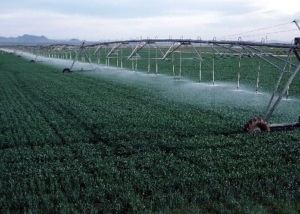The Impact of the Green Revolution

Up until the early 20th century, agricultural practices in developing nations changed very little over thousands of years. Growing populations meant that these countries needed to figure out a way to feed their people. New techniques were necessary to ensure that there was an increase in crop production in places that struggled to produce proper amounts of food. These innovations were able to come to fruition by implementing what people now know as the Green Revolution.
The Green Revolution is a set of changes that occurred in developing nations that saw an increase in crop production. These changes included introducing new irrigation techniques that people could use to cultivate the land, planting genetically modified seeds that raise crops and applying chemical pesticides and fertilizers. These techniques allowed nations to produce more crops than they ever had in the past.
One of the most significant contributors to the success of the Green Revolution was an American scientist named Norman Borlaug. In 1954, Borlaug, with funding from the Ford and Rockefeller Foundations, developed a genetically modified high yielding variety (HYV) of wheat seeds. These seeds went to the Philippines, India and Mexico, where they were able to increase their harvest from previous years significantly. This type of seed development would lead to other HYV of seeds, including bean, rice and corn that could grow in other parts of the world. Borlaug is responsible for saving over a billion people from starvation in developing nations.
The Green Revolution and Mexico
Initially, the Green Revolution began in the 1940s in Mexico. The Mexican government received a grant from the Rockefeller Foundation to eventually discover ways to use dry land for massive crop production. Along with irrigation changes, the Mexican government created the International Maize and Wheat Improvement Center that helped with research to discover stronger HYV of crops that can survive the arid land of northwest Mexico and produce more products. Wheat became one of the most successful crops in Mexico, and by 1960 it was able to change from importing wheat to exporting it. Mexico is now a major wheat exporter, and as of August 2019, it has exported 1 million metric tons of wheat thanks to the success of the green revolution.
The Green Revolution and India
In 1950, after the notorious famine India suffered from the decade before, the country was still struggling to feed its growing population of over 375 million. India had a problem with the number of crops it was producing; it simply was not enough. Because of the success of the HYV of crops in Mexico, the Indian government, along with funding from the Ford Foundation, was able to bring those crops to the northern Indian region of Punjab. The region of Punjab received those seeds because of its past agricultural success and access to water. The introduction of the new HYV seeds helped to avoid widespread famine and significantly increased wheat production in India. In 1960 India produced 10 million tons of wheat; by 2006 it was producing 69 million tons. Today, India’s population is at 1.3 billion and growing, so it needs to continue its success. With 44 percent of India’s current working population in the agriculture industry, there are calls by some for a second Green Revolution in order to feed the constantly rising population. In 2019, India has already set a new all-time high for wheat production at over 100 million tons, but exports are lower than previous years.
The Green Revolution and the Philippines
The Government of the Philippines created the International Rice Research Institute (IRRI) in 1960 with funding from the Rockefeller Foundation and Ford Foundation. The institute emerged to discover new strains of rice that would be able to feed the growing population of Asia. In 1966 the IRRI produced a new form of rice called IR8, or miracle rice, that was a cross between two types of rice, Peta and Dee-Geo-woo-gen. In the 20 years following the discovery of IR8, the Philippines’ annual production of rice went from 3.7 million tons to 7.7 million. IR8 was an HYV crop so successful it saw the Philippines become a rice exporter for the first time in the 20th century. Recently it was able to export 35 tons of rice after seeing the success of its crops. The country is now the eighth largest producer of rice in the world, having produced 2.7 percent of the world’s rice.
None of the successes of the Green Revolution would have been possible if it were not for the grants from charitable organizations as well as the dedication from leaders like Norman Borlaug. Through innovation and scientific research, the world saw discoveries that helped billions in developing countries. Mexico, India and the Philippines were able to overcome obstacles such as their environment and population growth to help feed the world.
– Samuel Bostwick
Photo: Flickr
